Gluing Atmospheric Lidar Signals Based on an Improved Gray Wolf Optimizer
Abstract
1. Introduction
2. Methods
2.1. General Idea
2.2. Improved Gray Wolf Optimizer (IGWO)
2.2.1. Initial Gluing Region and Fitness Function
2.2.2. Fundamentals
2.3. Neighborhood Rough Set (NRS)
2.4. Final Gluing Method
3. Results
3.1. Verification of Gluing Stability
3.2. Comparison of Solving Capability
3.3. Full-Day Gluing Experiment
4. Conclusions
Author Contributions
Funding
Data Availability Statement
Conflicts of Interest
References
- Singh, U.N.; Keckhut, P.; McGee, T.J.; Gross, M.R.; Hauchecorne, A.; Fishbein, E.F.; Waters, J.W.; Gille, J.C.; Roche, A.E.; Russell, J.M., III. Stratospheric Temperature Measurements by Two Collocated NDSC Lidars during UARS Validation Campaign. J. Geophys. Res. Atmos. 1996, 101, 10287–10297. [Google Scholar] [CrossRef]
- Yue, C. Using Rayleigh Lidar Observe and Study of the Middle Atmosphere over Beijing. Master’s Thesis, The University of Chinese Academy of Sciences, Beijing, China, 25 May 2015. [Google Scholar]
- Alpers, M.; Eixmann, R.; Fricke-Begemann, C.; Gerding, M.; Höffner, J. Temperature Lidar Measurements from 1 to 105 Km Altitude Using Resonance, Rayleigh, and Rotational Raman Scattering. Atmos. Chem. Phys. 2004, 4, 793–800. [Google Scholar] [CrossRef]
- Kaifler, B.; Rempel, D.; Roßi, P.; Büdenbender, C.; Kaifler, N.; Baturkin, V. A Technical Description of the Balloon Lidar Experiment (BOLIDE). Atmos. Meas. Tech. 2020, 13, 5681–5695. [Google Scholar] [CrossRef]
- Kaifler, B.; Kaifler, N. A Compact Rayleigh Autonomous Lidar (CORAL) for the Middle Atmosphere. Atmos. Meas. Tech. 2021, 14, 1715–1732. [Google Scholar] [CrossRef]
- Fu, Y.P.; Wang, Y.; Zhang, T.S.; Fan, G.Q.; Liu, W.Q.; Chang, Z.; Qiu, X.H.; Fang, L.L.; Tian, Y.Z. Signal Acquisition System with Simultaneous Analog and Photon Counting Measurement for Lidar. Chin. J. Lasers 2015, 42, 318–327. [Google Scholar]
- Newsom, R.K.; Turner, D.D.; Mielke, B.; Clayton, M.; Ferrare, R.; Sivaraman, C. Simultaneous Analog and Photon Counting Detection for Raman Lidar. Appl. Opt. AO 2009, 48, 3903–3914. [Google Scholar] [CrossRef] [PubMed]
- Zhang, Y.; Yi, F.; Kong, W.; Yi, Y. Slope Characterization in Combining Analog and Photon Count Data from Atmospheric Lidar Measurements. Appl. Opt. AO 2014, 53, 7312–7320. [Google Scholar] [CrossRef] [PubMed]
- D’Amico, G.; Amodeo, A.; Mattis, I.; Freudenthaler, V.; Pappalardo, G. EARLINET Calculus Chain–Technical–Part 1: Pre-Processing of Raw Lidar Data. Atmos. Meas. Tech. 2016, 9, 491–507. [Google Scholar] [CrossRef]
- Huang, L.F.; Gong, W.; Li, J.; Mao, F.Y.; Lei, L.F. Signal Splicing of Dual-Receiver Mie Scattering Lidar in Atmospheric Remote Sensing. Natl. Remote Sens. Bull. 2012, 16, 705–719. [Google Scholar]
- Li, J.; Gong, W.; Mao, F.Y.; Zhang, J.Y. Dual Field of View Lidar for Observing Atmospheric Aerosols over Wuhan, China. Acta Opt. Sin. 2013, 33, 9–15. [Google Scholar]
- Walker, M.; Venable, D.; Whiteman, D.N. Gluing for Raman Lidar Systems Using the Lamp Mapping Technique. Appl. Opt. AO 2014, 53, 8535–8543. [Google Scholar] [CrossRef] [PubMed]
- Gao, F.; Veberič, D.; Stanič, S.; Bergant, K.; Hua, D.-X. Performance Improvement of Long-Range Scanning Mie Lidar for the Retrieval of Atmospheric Extinction. J. Quant. Spectrosc. Radiat. Transf. 2013, 122, 72–78. [Google Scholar] [CrossRef]
- Gao, F.; Xu, X.; Zhu, Q.; Wang, L.; He, T.; Wang, L.; Stanič, S.; Hua, D. Evaluation and Improvement of Lidar Performance Based on Temporal and Spatial Variance Calculation. Appl. Sci. 2019, 9, 1786. [Google Scholar] [CrossRef]
- Duan, L.L.; Liu, D.; Zhang, Y.P.; Cheng, Z.T.; Luo, J.; Yang, F.Y.; Shen, Y.B.; Bai, J. Lidar Data Gluing Technology Based on Hybrid Intelligent Algorithm. Acta Opt. Sin. 2017, 37, 21–29. [Google Scholar]
- Mirjalili, S.; Mirjalili, S.M.; Lewis, A. Grey Wolf Optimizer. Adv. Eng. Softw. 2014, 69, 46–61. [Google Scholar] [CrossRef]
- Nadimi-Shahraki, M.H.; Taghian, S.; Mirjalili, S. An Improved Grey Wolf Optimizer for Solving Engineering Problems. Expert Syst. Appl. 2021, 166, 113917. [Google Scholar] [CrossRef]
- Taylor, J. Introduction to Error Analysis, the Study of Uncertainties in Physical Measurements, 2nd ed.; University Science Books: Herndon, VA, USA, 1997. [Google Scholar]
- An, R.M.; Suo, M.L. Application of Attributes Reduction and Weights Calculation through Neighborhood Rough Set. Comput. Eng. Appl. 2016, 52, 160–165. [Google Scholar]
- Hu, Q.H.; Yu, D.R.; Xie, Z.X. Numerical Attribute Reduction Based on Neighborhood Granulation and Rough Approximation. J. Softw. 2008, 19, 640–649. [Google Scholar] [CrossRef]
- University of Wisconsin Lidar Group. Available online: https://radiance.ssec.wisc.edu/ (accessed on 15 June 2023).
- Evans, R.D. The Atomic Nucleus; McGrow-Hill: New York, NY, USA, 1955; pp. 785–794. [Google Scholar]
- Deb, K.; Pratap, A.; Agarwal, S.; Meyarivan, T. A Fast and Elitist Multiobjective Genetic Algorithm: NSGA-II. IEEE Trans. Evol. Comput. 2002, 6, 182–197. [Google Scholar] [CrossRef]
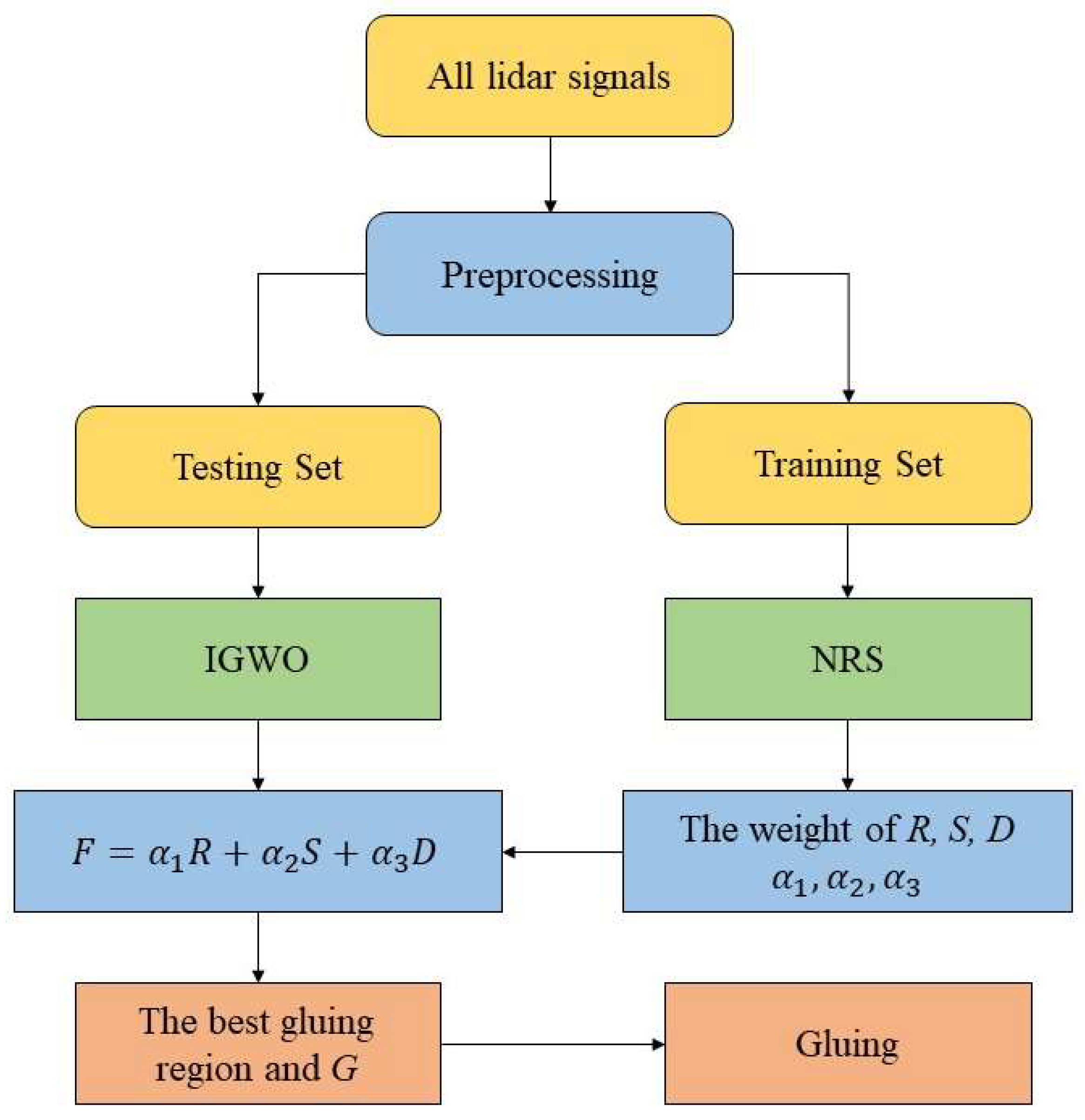
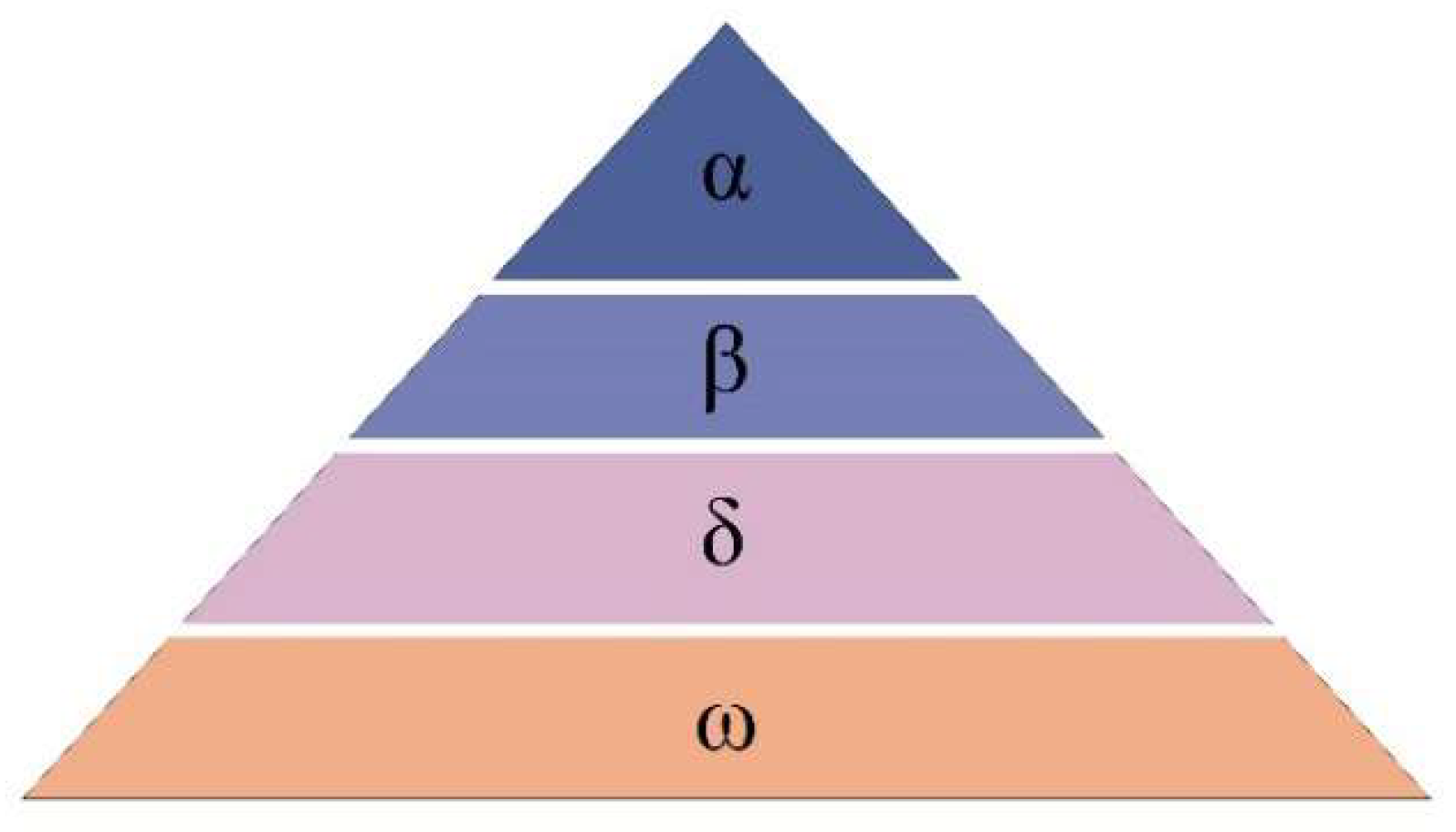
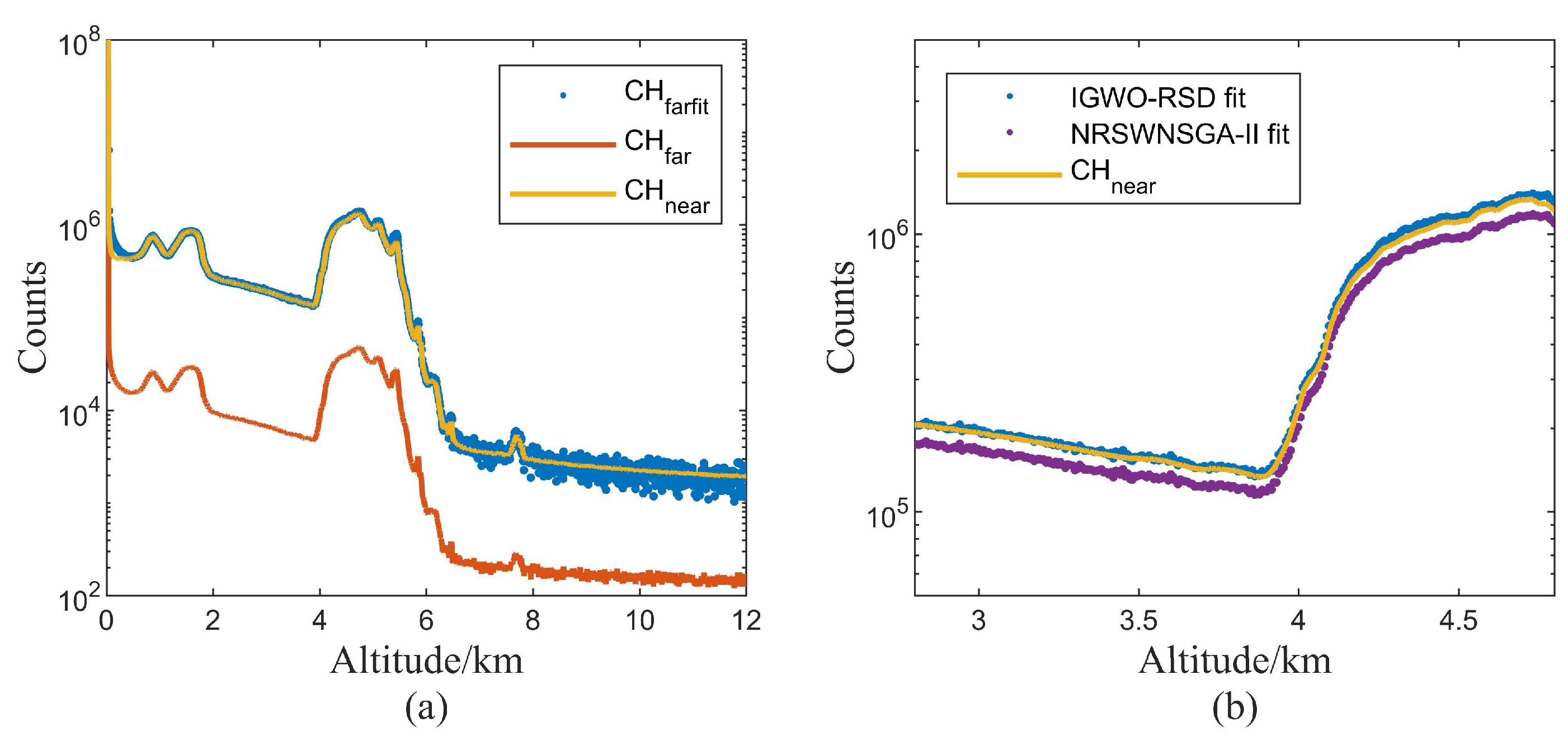

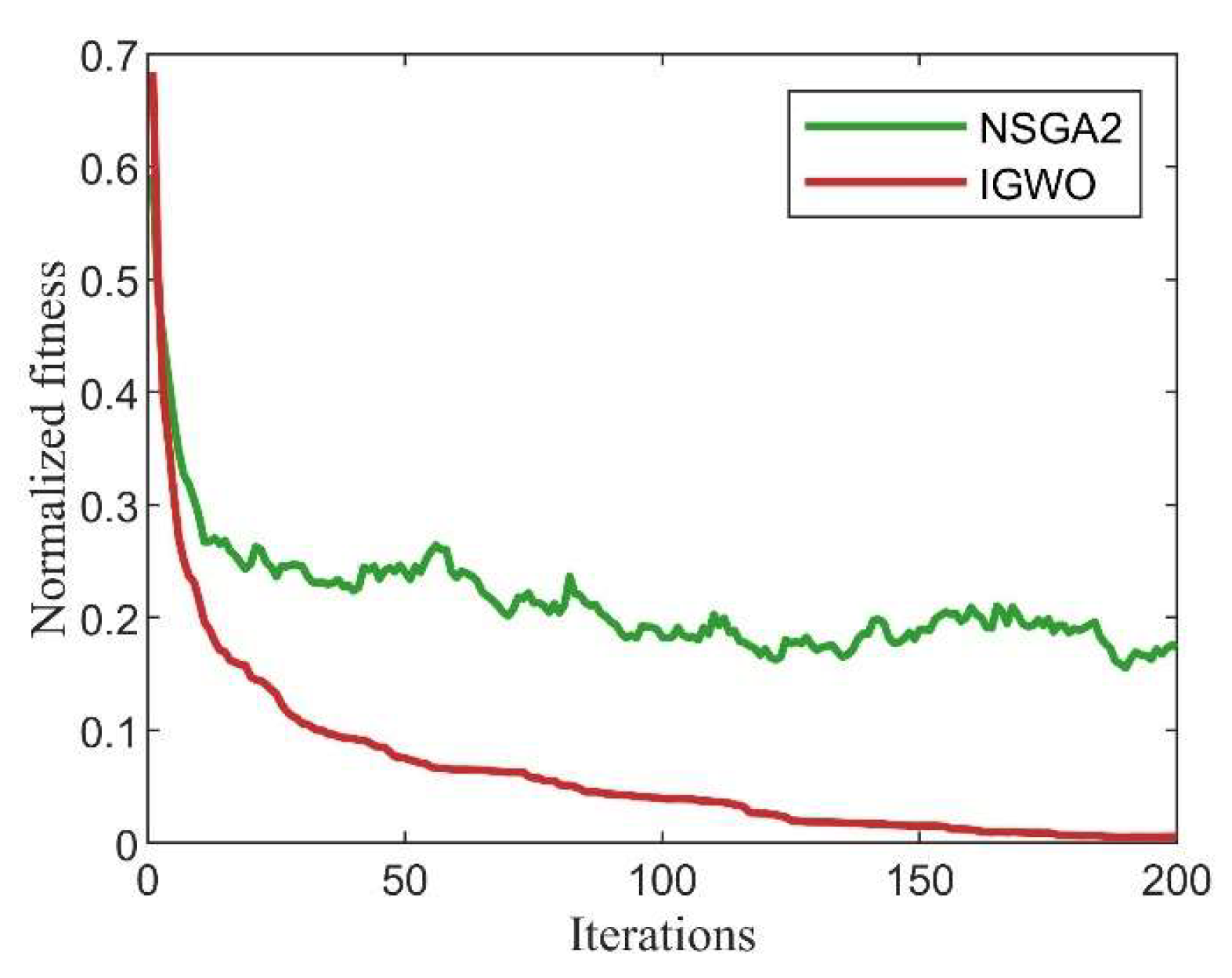
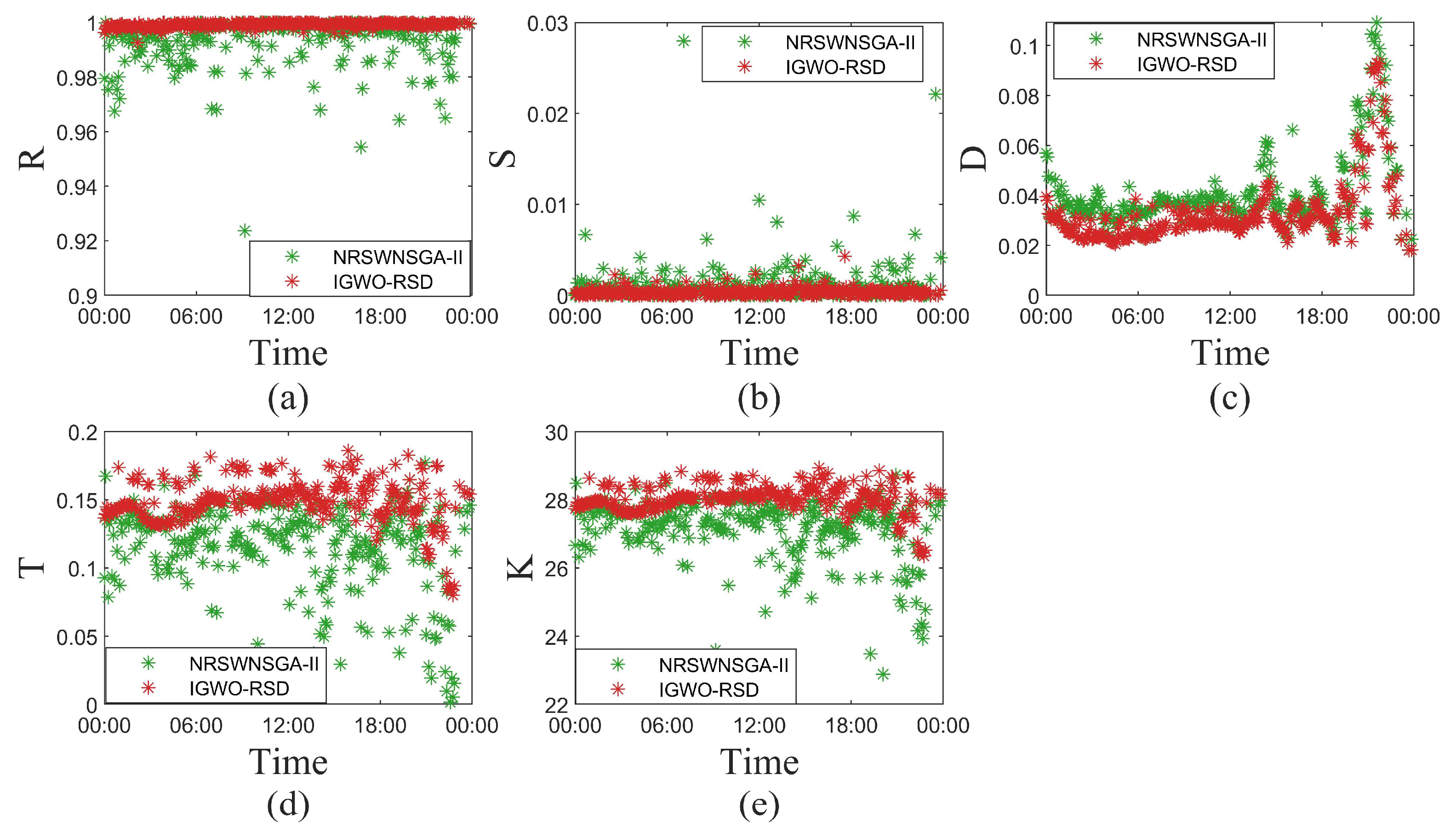

| Property Point | R/% | S/% | D/% |
|---|---|---|---|
| 0 | [99, 100] | [0, 0.1] | [0, 0.05] |
| 1 | [98, 99) | (0.1, 0.2] | (0.05, 0.1] |
| 2 | [96, 98) | (0.2, 0.4] | (0.1, 0.2] |
| 3 | [92, 96) | (0.4, 0.6] | (0.2, 0.3] |
| 4 | Else | Else | Else |
| Parameter | Value | Parameter | Value |
|---|---|---|---|
| Number of wolves | 100 | Number of iterations | 70 |
| Weight of R | 0.4102 | Lower limit of R | 0.9 |
| Weight of S | 0.2233 | Time resolution of samples | 60 min |
| Weight of D | 0.3665 | Vertical resolution of samples | 7.5 m |
Disclaimer/Publisher’s Note: The statements, opinions and data contained in all publications are solely those of the individual author(s) and contributor(s) and not of MDPI and/or the editor(s). MDPI and/or the editor(s) disclaim responsibility for any injury to people or property resulting from any ideas, methods, instructions or products referred to in the content. |
© 2023 by the authors. Licensee MDPI, Basel, Switzerland. This article is an open access article distributed under the terms and conditions of the Creative Commons Attribution (CC BY) license (https://creativecommons.org/licenses/by/4.0/).
Share and Cite
Li, S.; Wu, T.; Zhong, K.; Zhang, X.; Sun, Y.; Zhang, Y.; Wang, Y.; Li, X.; Xu, D.; Yao, J. Gluing Atmospheric Lidar Signals Based on an Improved Gray Wolf Optimizer. Remote Sens. 2023, 15, 3812. https://doi.org/10.3390/rs15153812
Li S, Wu T, Zhong K, Zhang X, Sun Y, Zhang Y, Wang Y, Li X, Xu D, Yao J. Gluing Atmospheric Lidar Signals Based on an Improved Gray Wolf Optimizer. Remote Sensing. 2023; 15(15):3812. https://doi.org/10.3390/rs15153812
Chicago/Turabian StyleLi, Shijie, Tong Wu, Kai Zhong, Xianzhong Zhang, Yue Sun, Yijian Zhang, Yu Wang, Xinqi Li, Degang Xu, and Jianquan Yao. 2023. "Gluing Atmospheric Lidar Signals Based on an Improved Gray Wolf Optimizer" Remote Sensing 15, no. 15: 3812. https://doi.org/10.3390/rs15153812
APA StyleLi, S., Wu, T., Zhong, K., Zhang, X., Sun, Y., Zhang, Y., Wang, Y., Li, X., Xu, D., & Yao, J. (2023). Gluing Atmospheric Lidar Signals Based on an Improved Gray Wolf Optimizer. Remote Sensing, 15(15), 3812. https://doi.org/10.3390/rs15153812










